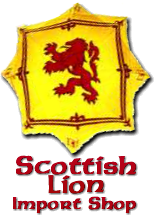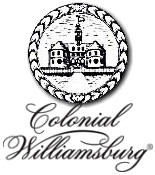The Canadian Breed
The Canadian Horse is a breed of horse developed in Canada. Although previously relatively unknown due to its rarity, the Canadian Horse has influenced many other North American breeds, including the Morgan, American Saddlebred, and Standardbred. Although there have been several times when the breed almost went extinct, now the Canadian Horse has many enthusiasts within and outside of Canada.
The Canadian Horse gave rise to the Canadian Pacer, which has had a profound impact on many of the gaited breeds of today.
Characteristics
The old-style Canadian Horse somewhat resembles the foundation-style Morgan, having large and expressive eyes, well-structured head and delicate ears. Their build is very muscular, compact and stout, with naturally animated gaits. They are known for having a heavy and wavy mane and tail, good bone and good feet . They are considered to have soundness, hardiness and endurance. They are very willing horses and easy keepers.
-
Most Canadian Horses are black. Bay, chestnut and brown are less common.
-
There are also a rare few that carry the cream gene (referred to as “ash white”)
-
Their average height is from 14 to 16 hands
-
They can weigh between 1000–1400 lbs.
There is a set naming system that is used to identify registered individuals. First comes the prefix, the farm or breeding establishment of which the foal was born into, followed by the sire’s name, and lastly the given name for the foal. However, each year a different letter is assigned, and it is by the year’s letter that the foal is named. Some older horses do not fall under this naming strategy, but it is now mandatory in naming registered offspring coming from purebred Canadian lines.
History
During the 19th century, breeders bred different types of Canadian crosses such as the Canadian Pacer, an amalgamation with the Narragansett Pacer, the “Frencher”, a Thoroughbred cross with hotter blood used as saddle horses or roadsters, and the “St. Lawrence”, a much heavier draft type, in order to meet a variety of needs. Later, thousands of horses were exported to the United States, for both the Civil War and also to use as breeding stock to create roadsters and stock for the growing stage coach lines. Others were exported to the West Indies for use on the sugar plantations. However, mass exports lead to a precipitous drop in the breed population in Canada in the 1870s, and the stud book was opened in 1886 to preserve the breed and prevent possible extinction. The Canadian Horse Breeders’ Association was formed in 1895.
In 1913, the Canadian government began a breeding center in Cap Rouge, Quebec. In 1919, this facility was outgrown so the breeding program was transferred to St. Joachim, Quebec, where it was operated jointly by the Canadian and Quebec governments.
In 1940, World War II brought an end to the federal breeding program at St. Joachim. At that time, the Quebec government purchased several of the horses and created their own provincial breeding program at Deschambault. In the 1960s, they worked to breed a taller, more refined horse, who would be suitable as a hunter or jumper. During this time, other private breeders worked to preserve the original type, the Henryville line being an example of this.
Eventually the Deschambault herd was sold at auction in 1981. The breed was in danger of disappearing for a second time, with less than 400 horses in the breed register, and fewer than 50 new registrations being recorded per year. However, dedicated breeders rescued the Canadian Horse. New registrations were around 50 per year in 1980 and rose to over 500 new registrations per year in 1999–2000. Since 2000, the new registrations are stable at 450-500 per year. There are now more than 6,000 horses registered.
Uses of the Canadian Horse
Today, many Canadian Horses are bred for driving. However, they also compete in a wide range of riding disciplines, and some are still used as work horses for farming. The generally good temperament displayed by the Canadian horse also makes them useful as all-round family horses.
In addition to the Beaver, the Canadian Horse is commonly seen as an animal symbol representing Canada, especially in connection with images of the Mounties. On April 30, 2002, a bill was passed into law by the Canadian Government making the Canadian Horse an official symbol of Canada.
Source: Wikipedia



